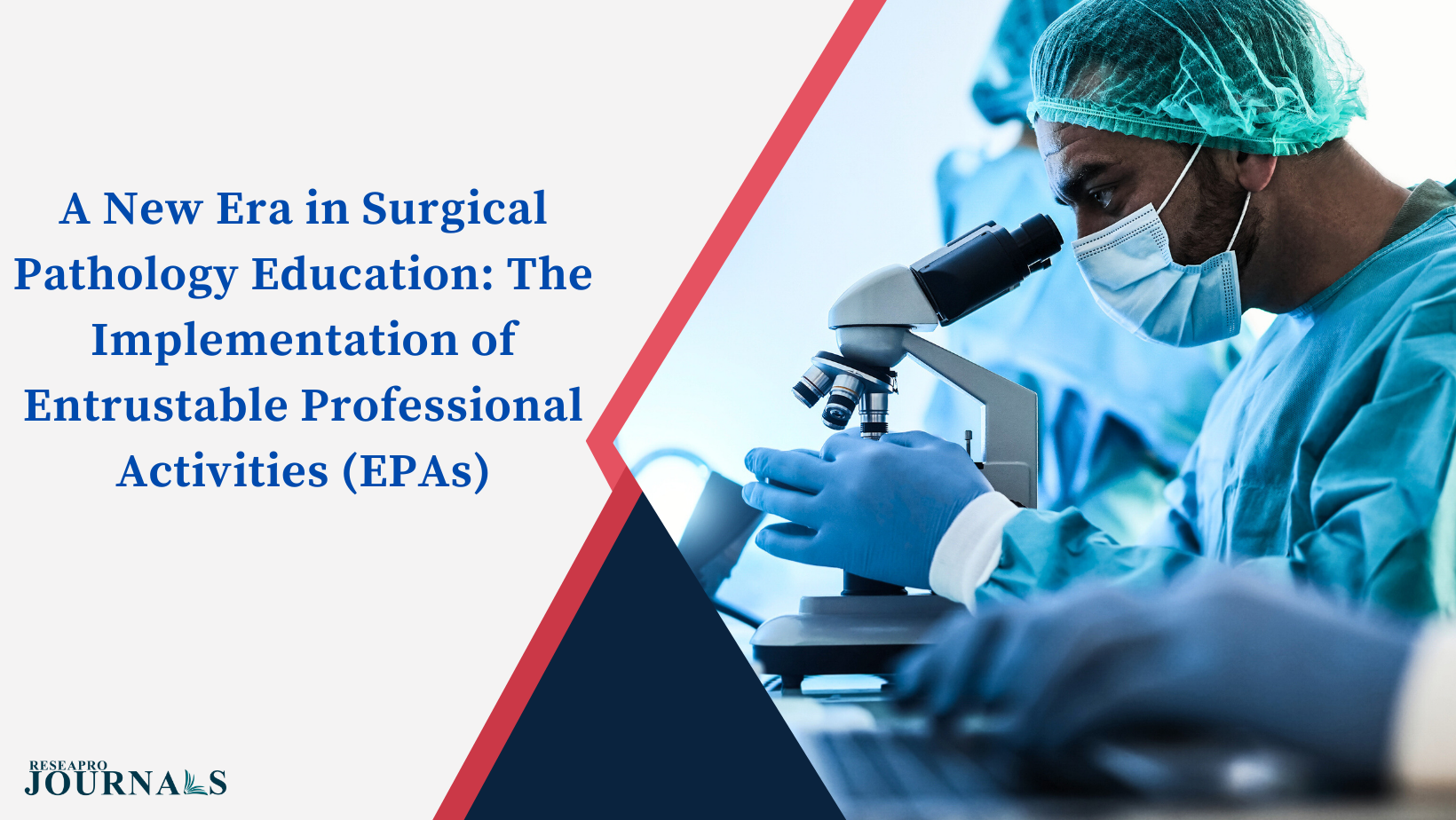|
Getting your Trinity Audio player ready...
|
Introduction:
In the ever-evolving field of medicine, competency-based medical education (CBME) has emerged as a transformative approach to training future physicians. This innovative methodology emphasizes the development of entrustable professional activities (EPAs), specific skills and competencies that trainees must master to become independent and confident practitioners.
Background:
Entrustable professional activities (EPAs) have been successfully implemented in various medical specialties across Europe and Canada, demonstrating their effectiveness in assessing trainee progress and ensuring they are well-equipped for independent practice. However, their adoption in the United States has been gradual, with some specialties, such as surgical pathology, lagging behind.
General Approach:
Recognizing the potential of EPAs to enhance surgical pathology training, we have piloted their implementation in our residency program’s surgical pathology rotation. This approach focuses on four key surgical pathology EPAs:
1. Â Â Grossing Specimens: Demonstrate proficiency in grossing surgical specimens, including proper handling, examination, and documentation.
2. Â Â Histologic Diagnosis: Accurately interpret microscopic slides to arrive at a correct histologic diagnosis.
3. Â Â Immunohistochemistry and Molecular Pathology: Utilize immunohistochemical and molecular techniques to refine diagnoses and guide patient management.
4. Â Â Communication and Collaboration: Effectively communicate pathology findings to clinicians, collaborate with colleagues, and contribute to patient care decisions.
Benefits of EPA Implementation:
By incorporating EPAs into our surgical pathology training, we aim to:
1. Â Â Enhance Trainee Preparedness: Equip residents with the necessary skills and competencies to transition into independent practice seamlessly.
2. Â Â Standardize Assessment: Provide a consistent and objective framework for evaluating trainee performance across the program.
3. Â Â Improve Patient Care: Foster a culture of continuous improvement and enhance patient care outcomes.
4. Â Â Promote Professional Growth: Encourage residents to reflect on their progress, identify areas for improvement, and develop self-directed learning habits.
Conclusion:
The integration of EPAs into surgical pathology training holds immense promise for preparing future pathologists to excel in their field. By embracing this competency-based approach, we can empower our residents to become independent, confident, and highly skilled practitioners, ready to contribute to the advancement of patient care.




